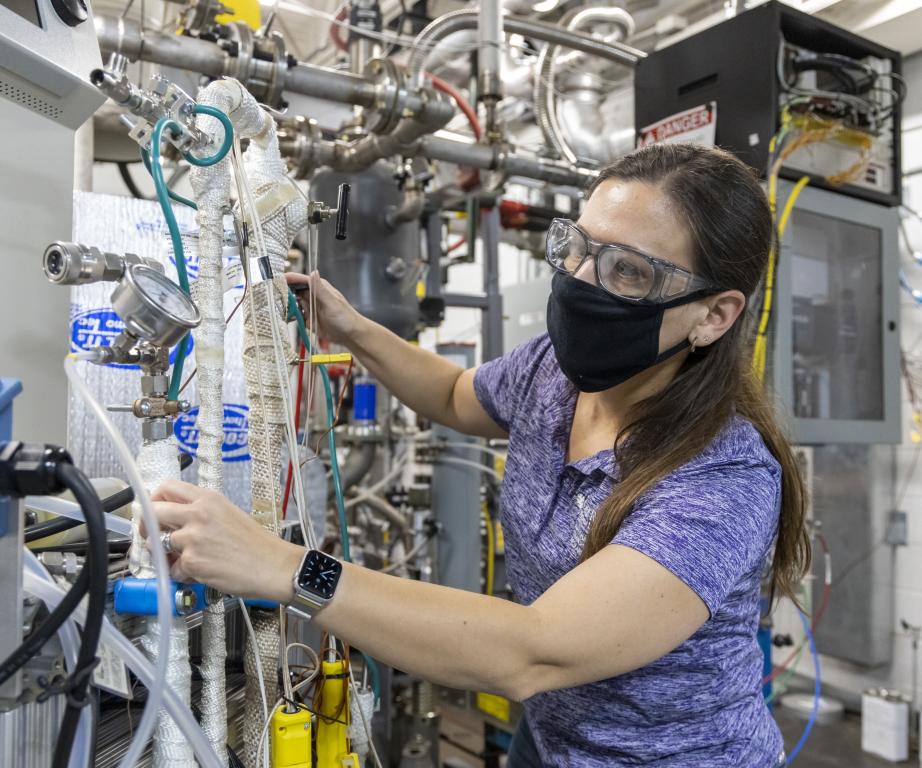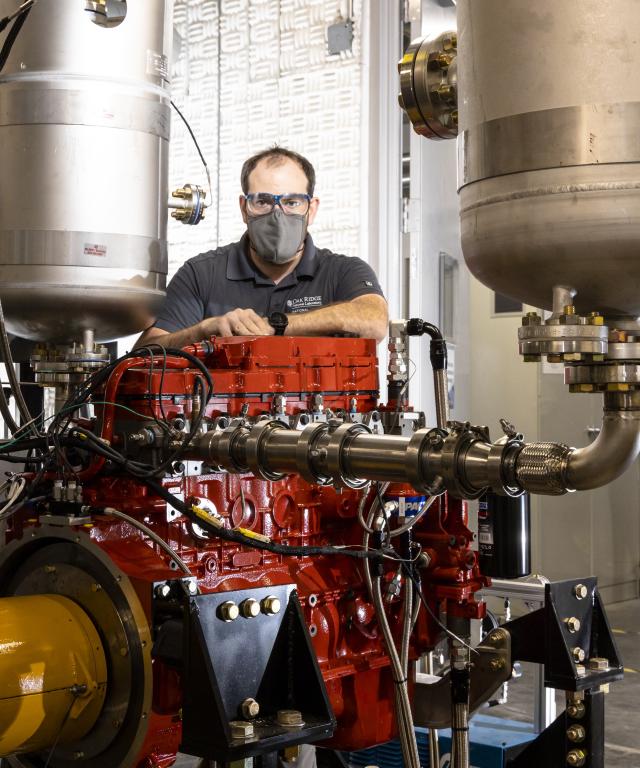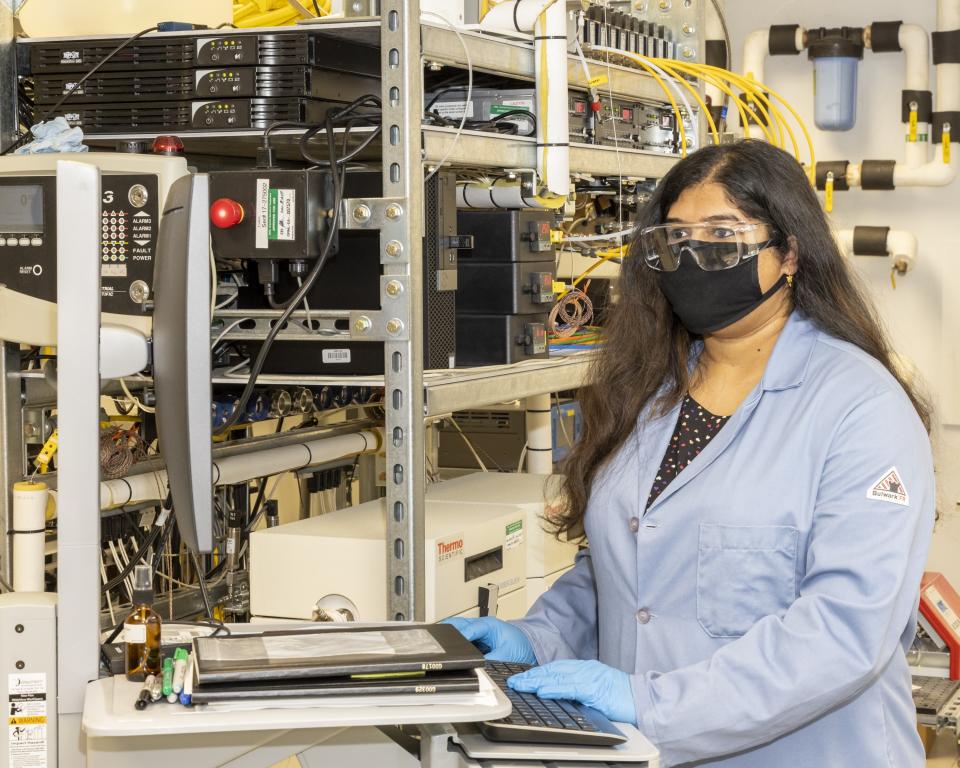
Research conducted by Oak Ridge National Laboratory and partner institutions working under an intensive DOE program in pursuit of a low-carbon transportation future found seven economical candidate fuels that can cut vehicle life-cycle greenhouse gas emissions by as much as 60% compared with petroleum-derived diesel.
This and other research analyzing biofuels, specialty blendstocks and advanced engine design is compiled in the newly released FY2020 annual report of the U.S Department of Energy’s Co-Optimization of Fuels & Engines (Co-Optima) Initiative.
Co-Optima brings together scientists and engineers from nine national laboratories and more than 35 industry and university partners to accelerate the development of clean, efficient, and commercially scalable high-performance fuels and engines.
Recent research under the initiative has concentrated on medium- and heavy-duty vehicles with a goal of increasing the renewable content of diesel fuel, along with revolutionary new truck engine designs.

Among the highlights in this year’s report, Co-Optima researchers:
· Revealed strong potential for many candidate blendstocks to reduce criteria pollutant emissions and cut life cycle GHG emissions by more than 60% compared to petroleum-derived diesel.
· Identified bio-based blendstocks that show potential to increase efficiency and reduce GHG emissions when used in multimode engines.
· Demonstrated that advanced combustion modes can boost efficiency and cut emissions for vehicles under typical driving conditions, while maintaining power density and efficiency gains.
Co-Optima researchers produced more than 60 reports, paper, and other publications, with at least four articles in high-impact journals. The report reflects cumulative knowledge of the three-year-old Co-Optima initiative, with FY 2020 featuring 100 individual research projects and the contributions of some 200 national laboratory researchers, 50 university researchers and 75 stakeholder companies.
The work also led to DOE’s selection of seven industry-led projects that will leverage the computational and experimental expertise of the national labs to accelerate development and adoption of commercial high-performance biofuels. In one of these projects, ORNL will work with General Motors and NREL to analyze fuel property effects on abnormal combustion for biofuel-petroleum fuel blends.

A more recent round of DOE awards in May 2021 will fund another four such Co-Optima projects. ORNL will work with industry in two of those: with Cummins to analyze how physical and chemical fuel properties affect combustion in medium-duty engines through computational fluid dynamics simulations; and with Shell and Argonne National Laboratory to quantify how fuel volatility can be used to increase anti-knock performance, in order to heighten engine efficiency and the use of biomass-derived fuels.
During the past year, the program was challenged as the COVID-19 pandemic affected operations across the country, but research continued with minimal interruption, said Robert Wagner, Co-Optima co-lead and director of the Buildings and Transportation Science Division at ORNL. “The collaborative spirit of Co-Optima was a big reason why our research was undeterred,” Wagner said, noting that the program saw record attendance at the year’s virtual all-hands meeting
The year also marked the development and introduction of new modeling and simulation tools to greatly speed research, evaluating fuel blends in days rather than months, Wagner said. These include high-fidelity computational fluid dynamics simulations for new insight on fuel-engine interactions, as well as models that utilize high-performance computing and machine learning to accelerate fuel-engine co-optimization schemes. These tools and other Co-Optima data are available for free at the Co-Optima website.
Co-Optima is sponsored by the DOE Office of Energy Efficiency and Renewable Energy’s Vehicle Technologies and Bioenergy Technologies Offices.
UT-Battelle manages ORNL for the Department of Energy’s Office of Science, the single largest supporter of basic research in the physical sciences in the United States. The Office of Science is working to address some of the most pressing challenges of our time. For more information, please visit energy.gov/science.

